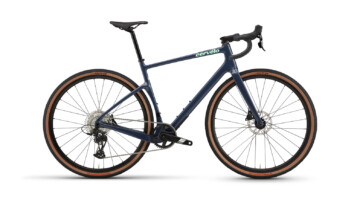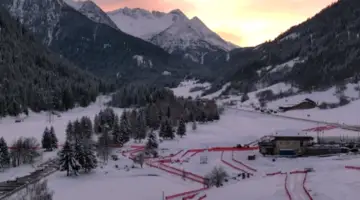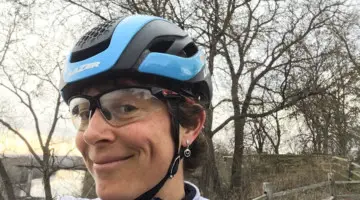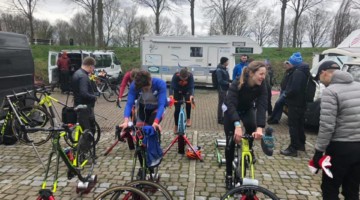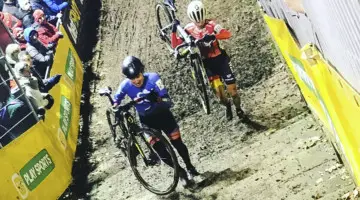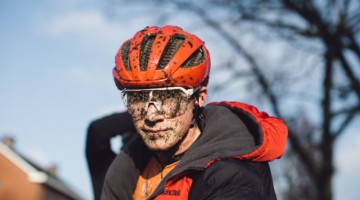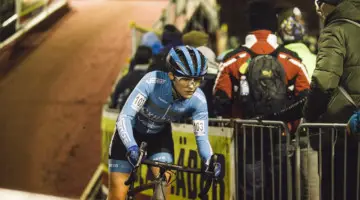A 10,750 foot climb over 54 miles doesn’t seem like good preparation for European cyclocross racing—or does it?
In this rider diary, Christine Vardaros talks about racing the Taiwan KOM Challenge hill climb race, what her training objectives were and how her cyclocross skills helped her navigate the up-to-27% grade and keep going when she wanted to quit.
by Christine Vardaros
Just imagine a long winding road carved into the side of a mountain that that takes you all the way from sea level straight up to 3275 meters altitude (10,750 feet) in just 87 kilometers (54 miles). If that isn’t enough to blow your mind, now allow your thoughts to fast forward to the last 10km (6.2 miles) before reaching the summit. What you may be thinking is…home stretch baby! But no—instead what you find is a twisty off-camber stretch of pavement literally and steadily pointing to the sky, often reaching gradients above 27% that only cyclocross gearing and technique can get you up.
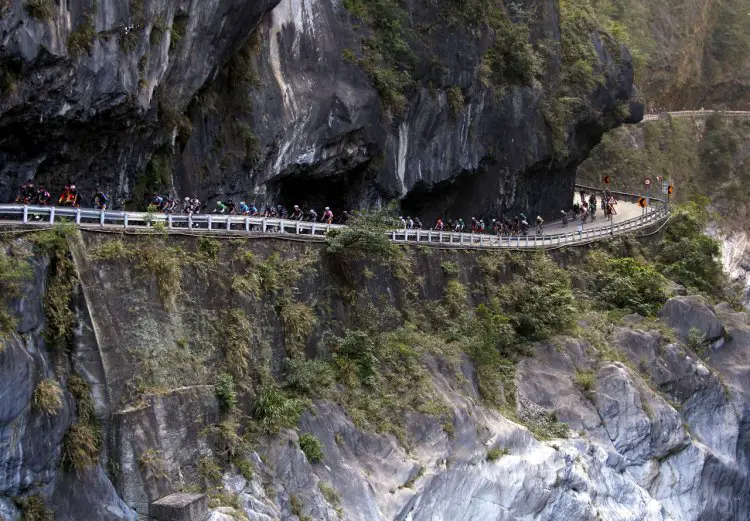
The Taiwan KOM Challenge traverses a 10,750 foot climb over 54 miles. Photo courtesy of Christine Vardaros
This arduous journey is called the Taiwan KOM Challenge, easily the most challenging hill climb race known to cyclists. Now that I’ve experienced this legendary event a week ago, I can see why only 75% (307 out of 412) of the racers made it to the finish line. Last year, with sub optimal weather conditions, only a bit over half of the participants reached the top.
While it may be a stellar event, what business would a cyclocrosser have to stand there at the start line… especially a Belgian-based one in the middle of her season?
This would mean missing out on the Koppenbergcross and the inaugural Niels Albert CX held on the same weekend. (I must admit, though, skipping Koppenbergcross was an easy decision since the organization made it a point to cut some of the women’s start money in half, claiming that the women can make it up in prize money since an outside organization from the US contributed money to increase the women’s prize purse.)
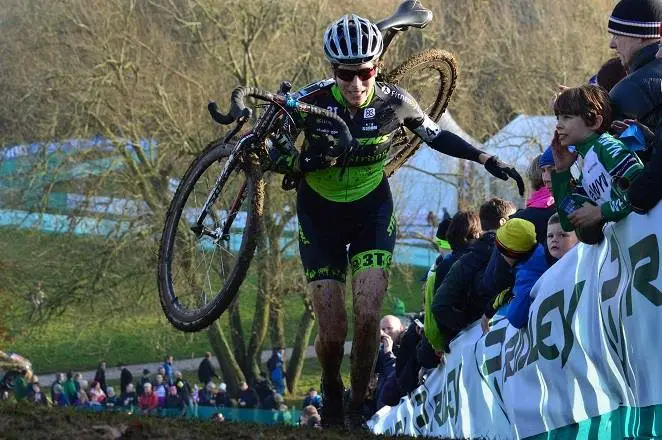
Our author was looking for a break in her European ‘cross schedule, to both jumpstart her fitness and recover from injury. © Christopher Jobs
What I was doing there was trying to bring my lousy fitness up a notch as my off season was a bust due to back injury. Simply drudging through the cross races, with their short explosive intervals, was going to do nothing more than dig me farther into a hole. And Taiwan was the perfect timing for me, as well as the perfect location to get the job done. On this relatively small island, about the size of South Carolina, there are 286 mountain summits over 3000 meters above sea level.
The top men at the event were mainly road racers, including 2015 Vuelta a Espana’s KOM Jersey winner 25 year old Omar Fraile, a rider for Caja Rural-Seguros RGA who transfers to MTN-Qhubeka next season. The most famous of them all was longtime GT pro Hans Rey, although he wasn’t exactly shooting for gold atop his mountain bike, equipped with wide, heavily treaded tires. He should have gone with their cross bike.
On the women’s side, there were many who were very familiar with cross such as 24 year old Eri Yonamine of Japan, 2013 KOM Challenge winner and pro cyclist for Saxo Bank FX Securities who races cross in the offseason. Another familiar face in the women’s field was 51 year old Marg Fedyna of Canada, 2014 KOM Challenge winner and adventure racer who just competed in a cyclocrosss event a week before arriving in Taiwan. “In fact, I managed to squeeze in three cross races and two weekday training events before coming to Taiwan. I think that since my strength endurance level increases from the KOM and the hill climb training, I would be stronger to withstand the intensity of a cross race,” surmises Fedyna, a semi-permanent fixture on the Elite provincial cyclocross championships podium.
Come race day, I knew who to target. I was still not sure if my back was healed enough to withstand the stress of going for gold but at least my bike was fully up for the challenge. I went with my Stevens Xenon with cross compact gearing, decked out with the brand new full carbon 3T Orbis II C35 LTD wheels (the same design as their disc tubular cyclocross version that comes out in February) and Challenge’s new Elite 25c tires that are made with the same open tubular design used to make their cross tires.
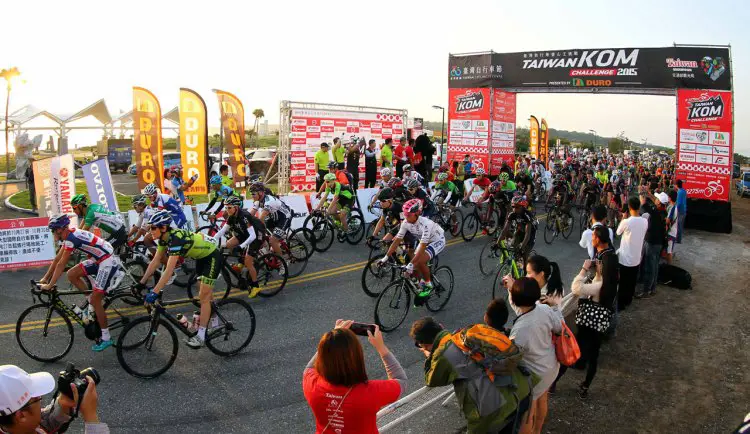
The start of the Taiwan KOM challenge, with our author near the front of the pack in green. Photo courtesy of Christine Vardaros
After a 17 km neutral rollout along the coast at a relaxed pace, we sharply turned inland where all hell broke loose. I lasted five minutes before severe back pain squelched any designs for a respectable showing. Within twenty minutes I must have had said hello to what felt like the whole peloton as they flew by me in fast forward, while I was stuck in slow motion.
Even so, I somehow managed to enjoy almost every single second out there, taking in the most eye-popping views imaginable. The highlight for me was riding through the infamous Taroko Gorge, a 19km long marble-walled canyon where the sheer cliffs face each other. The numerous tunnels carved into the mountainside were simply magnificent to weave in and out of. Even in extreme pain, I couldn’t help but grin from ear to ear.
After 67 kilometers of pedaling in what felt like deep thick mud due to the steep never-ending gradients, I reached the one real descent. It may have lasted only 4 kilometers but it was a really nice reprieve going into the last 10 kilometers where the road immediately turned towards the heavens.
I peered around the first bend only to notice that there was no flattening out of the road. In fact, each bend in the road for the next eight kilometers pretty much played out the same, relentless climbs reaching over 27% gradient strung together like a cruel joke. It really put the Namur World Cup climb into perspective for me. It was in these last kilometers where I started to see folks making the pilgrimage on foot. I must have passed at least 15 riders off their bikes, some of them walking while others lying on the side of the road trying to stretch their cramps out. Thankfully, standing on the pedals was easier for my back since I could rely more on cyclocross technique of flipping the front wheel from side to side to effectively minimize the gradient.
With two kilometers to go, I spotted what appeared to be a mirage in the form of a descent. It was real, lasting a full kilometer. At the bottom of the descent was a guy waving a green flag so I slowed down, assuming this was the finish line. But then a few riders flew by me, heading towards the next steep climb. I looked up and saw a huge red banner way high in the distance. Oh no. Game is not over. It reminded me of my sub-optimal cross races where I’m sure they’re going to pull me out a lap early, but only after I cross the finish do I realize I still have one lap to go. I picked up the speed, albeit with the wind kicked out of me a bit and meandered once again up the steep pitches for a full kilometer, passing yet five more guys on foot along the way.
As I came close to the finish – or at least I was hoping it was the real one this time, I heard a familiar voice, yelling, “Come on Christine! You’re almost there!” It was my NorCal buddy Matt McNamara. He wrote the Cyclocross Training chapter in the USAC Expert Coaching Manual so he knew exactly what I was going through in that moment. Even so, I thought, he better not be f—ing joking with me. He wasn’t.
A minute later I crossed the line at the summit of Mount Hehuan – Taiwan’s tallest mountain accessible by road. What a bizarre experience it all was – even looking around felt like I was in another world. All I saw were mountain peaks in every direction. After I was fed and changed, I headed back over to the finish to wait for the last of our group, Valenti Sanjuan of Barcelona, Spain. When he crossed the line, he was filled with such emotion that it finally hit me what we had just accomplished.
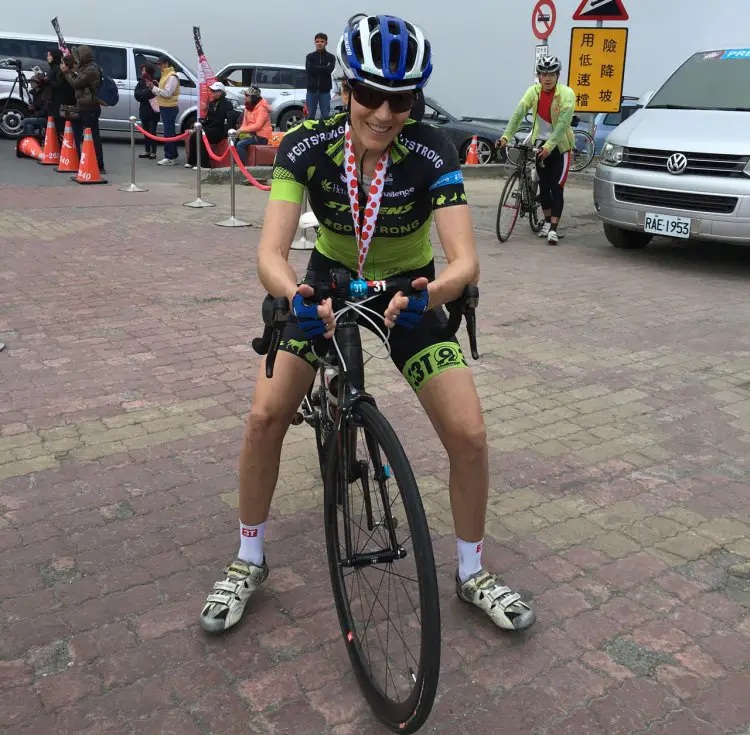
10,750 feet and a whole lot of suffering later, Vardaros finished the Taiwan KOM Challenge. Photo courtesy of Christine Vardaros
With a steady stream of tears, Sanjuan gushed, “What a great feeling to cross the line, I can’t describe it. I only put my foot down briefly three times, so happy I finished.” I, too, was so happy to finish. If I didn’t have a back injury and could ride full speed, I still would have been just as happy to finish, although the journey along the way would have played out differently. This aspect of the race reminds me of why I got into cyclocross in the first place. It was the feeling of having accomplished something special, especially when it got tough and I wanted so badly to quit.
Instead of going down in the records for a high placing, though, I will be remembered as the one who handed out more hellos than anyone else in the peloton.
Many thanks to the Taiwan Tourism and Taiwan Cyclist Federation for this amazing race. I am able to walk away with an experience that will surely make me a better cyclocross racer. Physically, I can imagine that my body became stronger just from the race alone after five-plus hours of pushing hard on the pedals, where it felt like a ‘cross race on steroids. The last 10 kilometers in itself where I had to give everything just to stay on the bike was surely a good preparation for the mini steep bits in my cross races to come. It felt like the ultimate cyclocross bootcamp.
Mentally, I feel the race has made me more resilient. Heck, if I can recover from this, then cross racing will be a breeze. The event has also put the concept of pain and challenge into perspective. This was the hardest, most painful thing I’ve ever had to do on a bike. In my upcoming cross races, I will keep this in mind and dig a bit deeper since I only have to endure 45 minutes of it as opposed to many hours.
For the few top riders who had designs of glory, Taiwan KOM Challenge was the perfect race to score big. The top man, Damien Monier of France (Bridgestone Anchor Cycling Team) earned $1,000,000 NTS ($30,807 USD) while $200,000 NTS ($6,160 USD) went to the top woman, Eri Yonamine. Placing second was Marg Fedyna – good for $100,000 NTS ($3,080 USD). Moving forward, the event organizers are hoping to attract more strong women with the promise of a higher prize purse in the future. They are also toying with the idea of eventually turning it into a UCI event. If this happens, they will be sure to hold a non-UCI replacement for everyone else to enjoy.
Now that I know exactly what it means to race the Taiwan KOM Challenge, I would definitely want to come back again next year. Assuming my fitness returns to where it should be going into cross season, I expect I’ll physically benefit even more from the event. I’m also considering to visit Taiwan for a training camp either just before my offseason of road racing or just before cross kicks off so that I can explore some of the other 285 mountains.
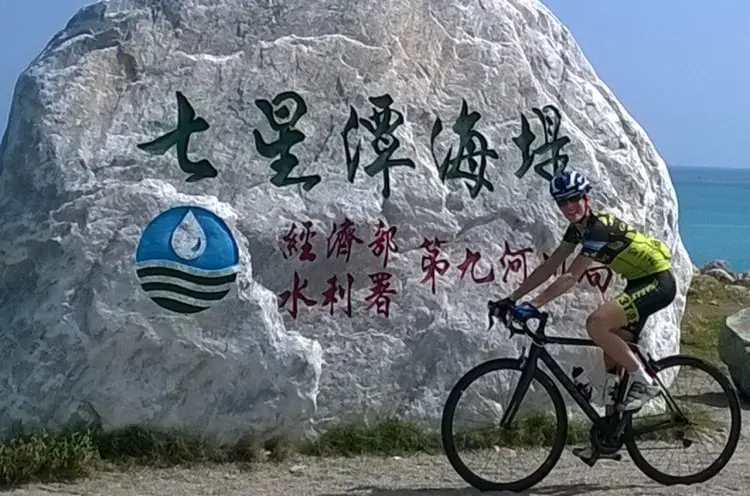
After experiencing the Taiwan KOM Challenge, Vardaros is thinking about coming back for a training camp, or to race again. Photo courtesy of Christine Vardaros
For those interested, there is a Taiwan-based organization called CrankPunk that holds training camps and bike tours. They handle everything for you so all you have to do is focus on riding the bike. For more info, contact them at www.crankpunk.com.
For more info on Taiwan KOM Challenge, visit www.taiwankom.org/en/.

